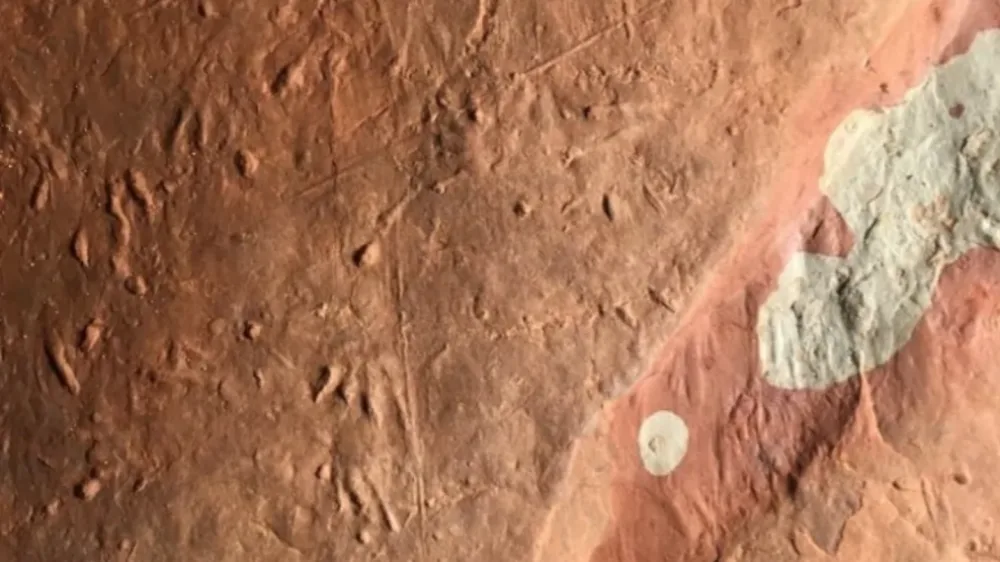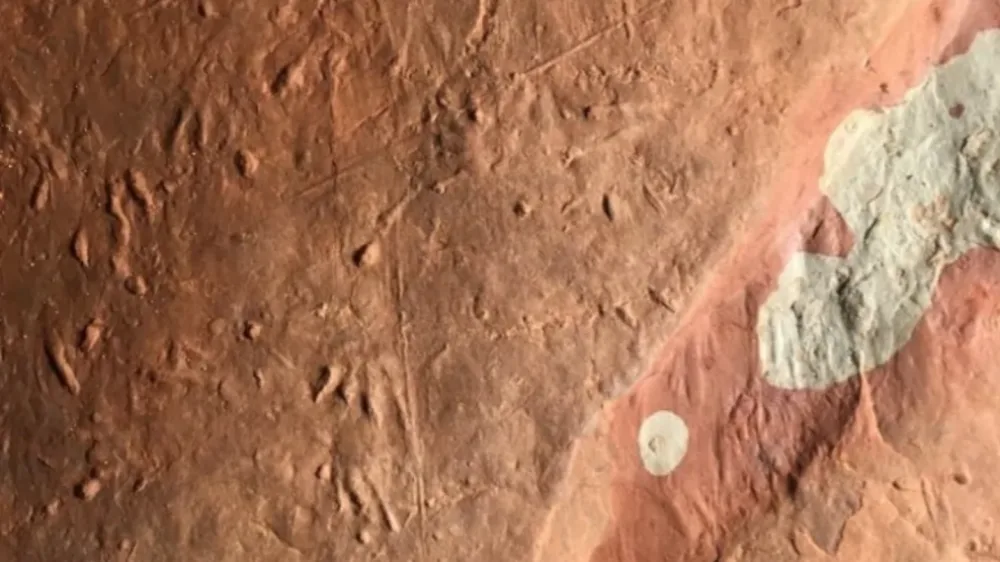
'Spectacular' 290 million-year-old fossilized tracks found on P.E.I.

Parks Canada confirms the rock holding fossilized tracks was found in the P.E.I. National Park, and asks anyone who discovers anything similar to leave it in place and contact park staff. (Patrick Brunet/submitted via CBC News)
The recent discovery of a set of fossilized footprints could put P.E.I. on the world stage in the annals of ancient reptiles.
The specimen found in the P.E.I. National Park still needs to be verified, but Nova Scotia geologist John Calder is already predicting that the record preserved in rock will add significantly to the scientific community's knowledge.
"Definitely the first words out of my mouth were 'Wow,'" he told CBC Island Morning's Mitch Cormier. "You know, this is brilliant. Absolutely brilliant. They're kind of a missing part of the story of fossil footprints on P.E.I."
Calder will get a chance to see the specimen (called a trackway) in person during a trip to the Island on Thursday. But the images he has seen have him excited.
"They are spectacular in their preservation. They could not be better."
RELATED: Dimetrodon footprints put PEI on paleontology 'world stage'
FOSSIL STILL TO BE VERIFIED
No one was available from Parks Canada to speak about the fossil discovery, but the agency said in a statement that it is aware of the exciting find. It also reminded people that when they find something notable in the park, they should leave it in place and contact officials rather than trying to remove it.

This photo shows the scale of the rock, compared to a measuring tape. (Patrick Brunet/submitted via CBC News)
Calder and a team of other experts will have the job of verifying the fossil as authentic and using the measurements and directions of the tracks to determine what type of animal made them.
"These would be fairly good-sized lizard-like creatures," he said. "If we saw one of these, we'd consider it a lizard. Technically it's not but that's another story."
He finds trackways fascinating.
"We're looking at the movement of a living creature from 290 million years ago," he said.
"Those are the footprints of a once-living creature. Bones? They're dead. The bones are of a dead creature … but footprints, they're actually living. That's where this creature walked, or it ran or it stopped or it paused, and fed on something. Or whatever it did. This is actually a snapshot of the life of a creature from millions of years ago."
RELATED VIDEO: FOSSIL OF A LIZARD-LIKE CREATURE FOUND BY A BOY ON A PRINCE EDWARD ISLAND BEACH IN 2015. COULD BE FROM 300 MILLION YEARS AGO, SAID EXPERTS
WORLD-CLASS SITE
Just last month, Calder co-authored a paper along with colleagues from Italy, Germany and the United States talking about the very type of creature he believes made the tracks found on P.E.I.'s North Shore — "its world distribution and its distribution in geological time as well. So I think we're going to nail this one pretty quickly."
Most exciting of all?
"P.E.I. is going to take its place now as a really world-class site for fossil footprints of the early Permian age, of the early age of reptiles. And it's pretty exciting.
"There'll be people looking at these fossil footprints for a hundred years, after we are long gone."
This article, written by Carolyn Ryan, was originally published for CBC News. Contains files from Mitch Cormier, CBC News.









